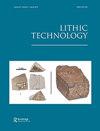Skill and Core Uniformity: An Experiment with Oldowan-like Flaking Systems
IF 1.2
3区 社会学
Q2 ANTHROPOLOGY
引用次数: 2
Abstract
ABSTRACT The Oldowan is the archaeological record’s oldest consistent evidence of hominin technical behavior. First appearing ∼2.6 Ma in East Africa, the Oldowan is characterized by simple core and flake technology using direct hard hammer percussion. Archaeologists debate whether Oldowan assemblages are uniform and what role hominin cultural abilities played in generating these assemblages. To improve existing methods for studying Oldowan technical uniformity, we conducted experiments involving 23 novices and one expert knapper. Subjects made simple stone tools under two different instructional conditions (observation-only and direct active instruction) over two hours. We used the resulting cores to track flaking efficiency, reduction intensity, and knapping errors. We find significant differences in the expert and novice core uniformity. Direct active teaching increased core flaking efficiency and reduced knapping errors. Comparisons between our experimental results and an Oldowan sample from Gona, Ethiopia, show core variability patterns that match our expert and actively taught novices.技能和核心均匀性:奥尔多旺式剥落系统的实验
本文章由计算机程序翻译,如有差异,请以英文原文为准。
求助全文
约1分钟内获得全文
求助全文

 求助内容:
求助内容: 应助结果提醒方式:
应助结果提醒方式:


